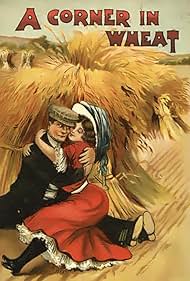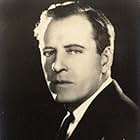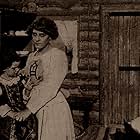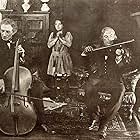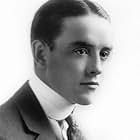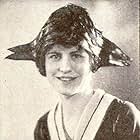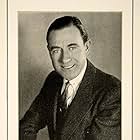CALIFICACIÓN DE IMDb
6.6/10
2.8 k
TU CALIFICACIÓN
Agrega una trama en tu idiomaAn unscrupulous and greedy speculator decides to corner the wheat market for his own profit, establishing complete control over the markets.An unscrupulous and greedy speculator decides to corner the wheat market for his own profit, establishing complete control over the markets.An unscrupulous and greedy speculator decides to corner the wheat market for his own profit, establishing complete control over the markets.
- Premios
- 1 premio ganado en total
Kate Bruce
- Woman in Store
- (sin créditos)
William J. Butler
- Ruined Wheat Trader
- (sin créditos)
Charles Craig
- Man on the Floor of the Exchange
- (sin créditos)
- …
Frank Evans
- Man on the Floor of the Exchange
- (sin créditos)
- …
Edith Haldeman
- Woman in Store
- (sin créditos)
Robert Harron
- Man on the Floor of the Exchange
- (sin créditos)
Ruth Hart
- Woman in Store
- (sin créditos)
Arthur V. Johnson
- Wheat Trader in Bowler Hat
- (sin créditos)
- …
Henry Lehrman
- Man on the Floor of the Exchange
- (sin créditos)
Jeanie Macpherson
- Banquet Invitee
- (sin créditos)
- …
Owen Moore
- Man on the Floor of the Exchange
- (sin créditos)
- …
- Dirección
- Guionistas
- Todo el elenco y el equipo
- Producción, taquilla y más en IMDbPro
Argumento
¿Sabías que…?
- TriviaOne of the first films in which D.W. Griffith used the technique of parallel editing (a technique he pioneered). It was used to create the effects in the wheat suffocating scene.
- ErroresWhen the Wheat King reads the letter regarding his increase in wealth, he is wearing gloves. After he falls into the wheat pit, there is an un-gloved hand reaching for the heavens; however, when they pull him out, he is once again wearing gloves.
- ConexionesEdited into Proposta in quattro parti (1985)
Opinión destacada
(Note: This is the first of three short films by D.W. Griffith that I care to highlight by commenting on them. The others are "The Girl and Her Trust" and "The Battle at Elderbush Gulch".)
D.W. Griffith usually made only three types of films: melodramas, social commentary and suspense (usually either battle scenes or the last-minute rescue, or both). His features often contain all three genres. His films were often set during the Victorian age or the Civil War era, or some other turning point in American history. His films of modern setting drip of Victorian sentiments. Mostly, his films were theatrical (the stories, interior shots and acting, most consistently). Griffith's films are categorical because he, apparently, rarely used scripts and was the rare filmmaker that interacted with the scenarists, and thus invented the role of director.
"A Corner in Wheat" is simple: it is social commentary. Based on a Frank Norris story, the anti-monopoly narrative fits with a recurrent theme of Griffith's films--sympathy for the poor. (It's rather hypocritical, however, considering that Griffith worked for a member of the Motion Picture Patents Company.) The story, albeit better than its contemporaries, is not of much interest, or, rather, is not why I highlighted this short film.
In 1903, Edwin S. Porter crosscut scenes out of temporal order in "The Great Train Robbery". Parallel-action crosscutting as dissection of a scene with spatially separate actions appeared as early as 1907 in Pathé and Vitagraph films. The crosscutting in "A Corner in Wheat" is exceptional because it functions as contrast between the wheat magnate's dinner party and the wheat farmers not being able to afford bread at a market. I'm not sure who helped Griffith with the editing, but it was probably James Smith, as usual. The parallel editing is appropriately slow paced, so again in the comeuppance dénouement. As well, the final shot was a good attempt at poignancy. The rest of the photoplay, especially the camera positioning, is primitive.
D.W. Griffith usually made only three types of films: melodramas, social commentary and suspense (usually either battle scenes or the last-minute rescue, or both). His features often contain all three genres. His films were often set during the Victorian age or the Civil War era, or some other turning point in American history. His films of modern setting drip of Victorian sentiments. Mostly, his films were theatrical (the stories, interior shots and acting, most consistently). Griffith's films are categorical because he, apparently, rarely used scripts and was the rare filmmaker that interacted with the scenarists, and thus invented the role of director.
"A Corner in Wheat" is simple: it is social commentary. Based on a Frank Norris story, the anti-monopoly narrative fits with a recurrent theme of Griffith's films--sympathy for the poor. (It's rather hypocritical, however, considering that Griffith worked for a member of the Motion Picture Patents Company.) The story, albeit better than its contemporaries, is not of much interest, or, rather, is not why I highlighted this short film.
In 1903, Edwin S. Porter crosscut scenes out of temporal order in "The Great Train Robbery". Parallel-action crosscutting as dissection of a scene with spatially separate actions appeared as early as 1907 in Pathé and Vitagraph films. The crosscutting in "A Corner in Wheat" is exceptional because it functions as contrast between the wheat magnate's dinner party and the wheat farmers not being able to afford bread at a market. I'm not sure who helped Griffith with the editing, but it was probably James Smith, as usual. The parallel editing is appropriately slow paced, so again in the comeuppance dénouement. As well, the final shot was a good attempt at poignancy. The rest of the photoplay, especially the camera positioning, is primitive.
- Cineanalyst
- 10 ago 2004
- Enlace permanente
Selecciones populares
Inicia sesión para calificar y agrega a la lista de videos para obtener recomendaciones personalizadas
Detalles
- Fecha de lanzamiento
- País de origen
- Idiomas
- También se conoce como
- Arbetare contra överklassen
- Locaciones de filmación
- Productora
- Ver más créditos de la compañía en IMDbPro
- Tiempo de ejecución14 minutos
- Color
- Mezcla de sonido
- Relación de aspecto
- 1.33 : 1
Contribuir a esta página
Sugiere una edición o agrega el contenido que falta

Principales brechas de datos
By what name was A Corner in Wheat (1909) officially released in Canada in English?
Responda